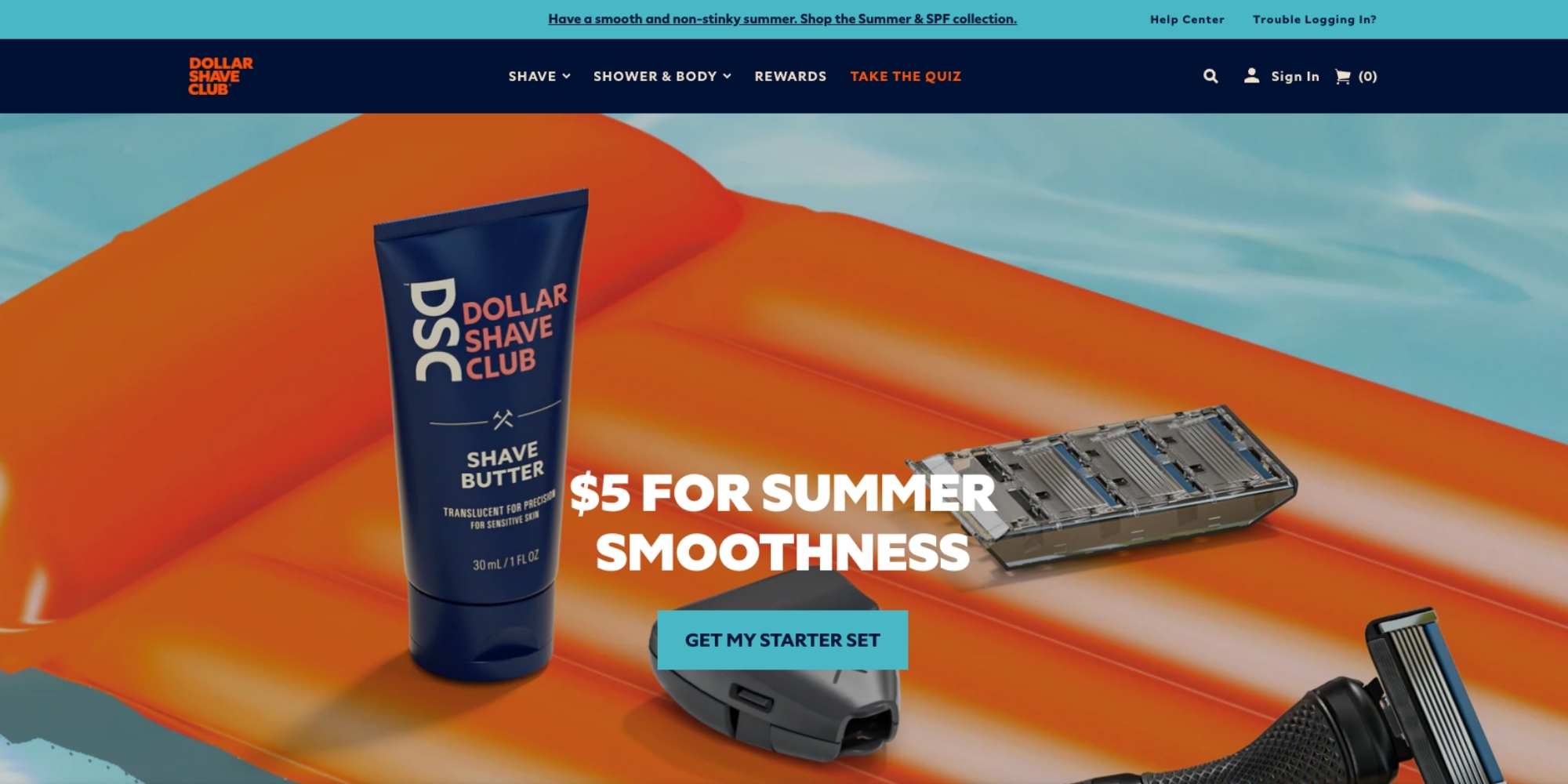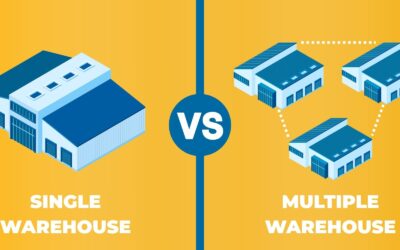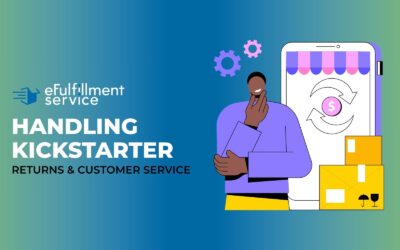
Scaling your eCommerce business can seem daunting. Increased orders, logistical headaches, and fierce competition are common hurdles. Without a clear strategy, growth can feel overwhelming.
You might already feel the pressure. Perhaps your website traffic is booming, but order fulfillment is lagging. Maybe customer inquiries are piling up faster than you can respond. These challenges are real, and they can threaten your business’s success.
But there’s a solution. This guide offers practical strategies to scale your eCommerce business efficiently. We’ll cover automation, customer service, marketing, and more, all backed by real-world examples and data. Ready to take your business to the next level? Let’s dive in.
Understanding Scaling vs. Growing

Many eCommerce businesses confuse scaling with growing, which can lead to inefficient use of resources.
Imagine increasing your sales but also watching your expenses skyrocket, leaving your profits stagnant. This is often the case when businesses grow without scaling. Growing means adding more resources proportionately to increase revenue, while scaling means boosting revenue without a significant rise in costs. Failing to distinguish between the two can drain your resources and hinder your profitability.
To effectively scale, focus on strategies that increase revenue while keeping costs low. This involves leveraging technology, optimizing operations, and enhancing customer experience. By understanding the difference between scaling and growing, you can make informed decisions that lead to sustainable growth.
For instance, Shopify reports that businesses using automation to manage customer service inquiries see a reduction in operating costs. This allows them to handle more inquiries without increasing headcount, thus scaling efficiently.
Laying a Strong Foundation
Trying to scale your ecommerce business without a solid foundation can lead to instability as your business grows.
Picture building a house on weak soil. As you add more floors, cracks begin to appear, and the structure becomes unsafe. Similarly, without a strong foundation, your eCommerce business may struggle with operational inefficiencies, missed targets, and financial instability.
A robust foundation ensures stability and scalability. This includes setting clear goals, measuring progress with KPIs, creating a solid business plan, ensuring financial viability, identifying your target audience, and building a strong website.

Setting Clear Goals: Establish 1, 3, 5, and 10-year goals. For example, aim to break even in the first year, achieve steady monthly growth by year three, and expand to new markets by year five.
Measuring Progress with KPIs: Regularly monitor and analyze key performance indicators (KPIs) to track the success of your ecommerce business. Your KPIs (Key Performance Indicators) are generally tracked through paid SEO and leads/sales that are generated through those.
These will be tracked through your channel metric rates, for instance, your conversion rate for paid advertising, cart abandonment, and the average value per order.
It’s also key to evaluate your NPS (Net Promoter Score) and customer retention. An easy way to track your customer retention is through a loyalty program, you can see their buying habits and reward them for spending.
Pay attention to these KPIs:
- Ecommerce Conversion Rate
- Average Order Value
- Customer Lifetime Value
- Customer Retention Rate
- Customer Acquisition Cost
- Shopping Cart Abandonment Rate
- Return on Ad Spend Rate
- Channel Mix Metrics
- Net Promoter Score
Creating a Solid Business Plan: A business plan outlines your strategy, projections, and milestones. It acts as a roadmap, keeping you focused and accountable.
Ensuring Financial Viability: Run the numbers before committing to large investments. Create a cash flow spreadsheet to understand your revenue, fixed costs, and inventory expenses. This financial clarity helps prevent overspending.
Identifying Your Target Audience: Understand your demographic and tailor your brand to appeal to them. A Nielsen report shows that businesses targeting specific audiences see a 60% increase in engagement.
Building a Strong Website: Your website is both your storefront and a marketing tool. Ensure it’s optimized for SEO, fast-loading, and mobile-friendly. According to Google, 53% of mobile users leave a site that takes longer than three seconds to load.

Consider Warby Parker, an eyewear company. They started with a clear business plan, identifying a gap in the market for affordable, stylish eyewear. Warby Parker’s founders targeted young, tech-savvy consumers who were comfortable shopping online. They launched a user-friendly website that allowed customers to try on glasses virtually, a novel feature at the time. This innovative approach, combined with their direct-to-consumer model, reduced costs and enhanced customer experience.
Warby Parker’s strong foundation enabled them to scale rapidly. They grew from a small startup to a company valued at over $3 billion in just a decade. By focusing on clear goals, understanding their audience, and leveraging technology, they expanded their product line, opened physical stores, and increased their market share significantly (Voy Media |) (The Biz Bites) (The Brand Hopper) (Digital Commerce 360) (Tigren)
Want to Scale Your eCommerce Business with Ease?
Get a FREE quote from eFulfillment Service to see how we could help simplify your eCommerce fulfillment.
Implementing Automation and Utilizing a 3PL

Managing increasing demands manually can lead to inefficiency and errors, particularly in inventory management, order fulfillment, and customer service.
As your eCommerce business grows, the burden of daily tasks multiplies. Manually handling inventory, customer inquiries, and ecommerce fulfillment becomes overwhelming. Mistakes become inevitable, and your customer service may suffer. This inefficiency can stunt your business growth and tarnish your reputation.
Implementing automation and partnering with a Third-Party Logistics (3PL) provider can streamline these processes, allowing you to focus on strategic growth. Automation tools can handle repetitive tasks, improve accuracy, and free up your time for more critical activities, while a 3PL can manage your logistics efficiently.

Implementing Automation:
Automation is the backbone of scaling efficiently. Here’s how to leverage it:
- Inventory Management: According to research from Capgemini, businesses that implement integrated order and warehouse management systems see on average a 20% increase in inventory accuracy and a 15% improvement in order fulfilment rates. This integration leads to a reduction in order processing times by up to 25% (Capgemini, 2022).
- Customer Relationship Management (CRM): Implement CRM systems like Salesforce or HubSpot to automate customer interactions. These systems help manage customer data, track interactions, and automate follow-ups, enhancing customer experience and loyalty.
- Email Marketing: Utilize platforms like Mailchimp or Klaviyo to automate email campaigns. Automated emails can welcome new customers, recover abandoned carts, and re-engage inactive customers. A report by Campaign Monitor states that automated emails generate 320% more revenue than non-automated emails.
- Customer Support: Implement chatbots and AI-driven customer support tools like Zendesk or Intercom to handle common customer inquiries. These tools provide instant responses, improving customer satisfaction and reducing the workload on your support team.

Utilizing a 3PL:
Partnering with a 3PL provider like eFulfillment Service can further streamline your operations. A 3PL handles warehousing, order processing, packaging, and shipping, allowing you to focus on scaling your business without the logistical headaches.
- Order Fulfillment: By outsourcing order fulfillment to a 3PL, you can scale your business efficiently. This partnership ensures that your products are picked, packed, and shipped quickly, improving delivery times and customer satisfaction.
- Inventory Management: A 3PL provides real-time inventory tracking and management. This integration helps maintain optimal stock levels and reduces the risk of overselling or stockouts.
- Cost Efficiency: Utilizing a 3PL can reduce operational costs. 3PL providers have established relationships with shipping carriers and can negotiate better rates, which translates to savings for your business.

Example: Dollar Shave Club is a prime example of a company that scaled rapidly by combining automation with a 3PL. They automated their subscription service and partnered with a 3PL to handle order fulfillment. This approach allowed them to process over 100,000 orders a day efficiently, focus on customer acquisition and retention, and achieve exponential growth (Ordergroove) (Business Wire).
Imagine having the freedom to focus on innovating and expanding your product line, knowing that routine tasks are handled seamlessly. Automation and 3PL partnerships not only reduce errors but also create a smoother, more reliable experience for your customers, fostering trust and loyalty.
Enhance Your Customer Service

Poor customer service can lead to dissatisfied customers, negative reviews, and loss of business.
Imagine customers repeatedly leaving your website due to slow response times or unresolved issues. Each negative experience can turn potential lifelong customers into detractors, damaging your reputation and revenue.
Enhancing customer service can boost customer satisfaction, increase loyalty, and improve overall business performance. Here are key strategies to achieve this:
Create a Multichannel Support Strategy: Offer support across multiple channels, such as email, social media, live chat, and phone. This approach caters to different customer preferences and ensures timely assistance. According to Shopify, integrating various support channels can significantly enhance customer experience by meeting them where they are most comfortable (Shopify).
Utilize Live Chat and AI: Implement live chat and AI chatbots to provide instant responses to customer inquiries. AI tools can handle common questions and free up human agents for more complex issues. This not only speeds up response times but also ensures 24/7 availability. A survey by Tidio found that 88% of web users had positive experiences with chatbots in 2022.

Did you know that 77% of customers feel that exceptional customer service is crucial when it comes to becoming loyal to a brand?
Customer loyalty can either make or break your brand so overlooking the customer service aspect is asking for disaster.
Personalize Customer Interactions: Use customer data to personalize interactions. Address customers by their names, track their purchase history, and offer tailored recommendations. This level of personalization can significantly enhance customer satisfaction and loyalty. CRM systems like Salesforce can help manage this data efficiently (Shopify).
Improve Response Times: Fast responses are crucial. Aim to answer queries as quickly as possible. Implementing a live chat feature and ensuring your support team is well-staffed can help achieve this. Research shows that 90% of customers rate an immediate response as essential for good customer service (Upscribe).
Gather and Act on Feedback: Regularly collect customer feedback through surveys, reviews, and direct interactions. Use this feedback to identify areas for improvement and implement necessary changes. Engaging with customer reviews, both positive and negative, shows that you value their opinions and are committed to improving (Shopify).
Trusted by eCommerce Brands Around the World.
Get some expert help by requesting a FREE quote from eFulfillment Service to see how we could help simplify your fulfillment.
Optimizing Your Website

A slow, hard-to-navigate website can frustrate visitors, leading to high bounce rates and lost sales.
Visitors who struggle to find products or experience slow loading times are likely to abandon your site and shop elsewhere. This can severely impact your conversion rates and the abilitity to scale your ecommerce business.
Optimizing your website enhances user experience, improves SEO, and increases conversions. Here’s how:
Enhance Page Speed: Optimize images, use a content delivery network (CDN), and minimize CSS/JS files. Google reports that 53% of mobile users abandon sites that take longer than three seconds to load. Faster page speeds lead to better user experiences and higher search rankings.
Improve Mobile Responsiveness: Ensure your website is mobile-friendly. With more consumers shopping on their phones, a mobile-responsive design is crucial. Warby Parker, for example, focuses heavily on mobile optimization to provide a seamless experience across all devices.
Simplify Navigation: Create intuitive, easy-to-use navigation menus. Clear categories and search functionality help visitors find products quickly, enhancing their shopping experience.
Use High-Quality Visuals: Incorporate high-resolution images and videos to showcase products. Visual content not only engages visitors but also provides a better understanding of your products.
Implement SEO Best Practices: Use descriptive, keyword-rich headings (H1, H2, H3), optimize meta descriptions, and ensure your URLs are SEO-friendly. Effective SEO practices improve your site’s visibility on search engines, driving more organic traffic .
Add Customer Reviews and Testimonials: Displaying reviews builds trust and helps potential customers make informed decisions. Positive reviews can significantly impact purchase decisions and enhance credibility.
See How a 3PL Can Help Your Online Store Skyrocket!
Get a FREE quote from eFulfillment Service to see how we could help simplify your order fulfillment.
Expanding Product Offerings
Limited product offerings can restrict your market reach and sales potential.
Relying on a narrow product range limits your ability to attract diverse customer segments. This can stagnate growth and leave you vulnerable to competitors with broader selections.

Expanding your product offerings can attract new customers, increase sales, and enhance brand loyalty. Here’s how:
- Conduct Market Research: Identify gaps in the market and analyze customer needs. Use surveys, focus groups, and competitor analysis to gather insights. Understanding what your customers want allows you to expand strategically.
- Diversify Your Product Line: Introduce complementary products or new categories. For instance, if you sell apparel, consider adding accessories or footwear. This diversification can appeal to a wider audience and increase average order value.
- Bundle Products: Offer product bundles at a discounted rate. Bundling can increase sales by encouraging customers to buy more items together, providing better value and convenience.
- Collaborate with Other Brands: Partner with complementary brands to introduce co-branded products. This collaboration can expand your reach and introduce your brand to new customer segments.
- Test New Products: Launch new products on a smaller scale to gauge customer interest before a full-scale rollout. This approach minimizes risk and helps you refine your offerings based on real feedback.
Developing a Solid Marketing Strategy
An ineffective marketing strategy can lead to wasted resources and poor business performance.
Without a well-planned marketing strategy, your efforts may not reach the right audience, resulting in low engagement and sales. If you’re hoping to scale your ecommerce business, this misalignment can prevent your business from achieving its full potential.

Developing a solid marketing strategy involves targeting the right audience with the right message through the right channels. Here’s how:
- Audit Your Current Strategy: Analyze your existing marketing efforts to identify what’s working and what’s not. Use tools like Google Analytics and social media insights to evaluate the effectiveness of your campaigns. This step helps you understand where to focus your efforts and resources.
- Set Clear Goals: Define specific, measurable, achievable, relevant, and time-bound (SMART) goals for your marketing activities. Clear goals provide direction and help track progress. Examples include increasing website traffic by 20% in six months or achieving a 15% conversion rate from social media campaigns.
- Identify Your Target Audience: Develop detailed buyer personas based on existing customer data. Understanding your target audience’s demographics, interests, and pain points helps tailor your marketing efforts to their needs. Use surveys and interviews to gather insights directly from your customers.
- Leverage Multiple Marketing Channels: Utilize a mix of marketing channels to reach a wider audience. This includes:
-
- Social Media Marketing: Create engaging content tailored to each platform. Use social media ads to increase reach and engagement. Platforms like Facebook, Instagram, and TikTok are effective for different demographics.
- Email Marketing: Build and segment your email list to send personalized and relevant content. Automated email campaigns can nurture leads and encourage repeat purchases.
- Content Marketing: Produce high-quality, valuable content such as blog posts, videos, and infographics that address your audience’s needs and interests. This can improve your SEO and establish your brand as an authority in your niche.
- Paid Advertising: Invest in paid ads on platforms like Google Ads, Facebook Ads, and Instagram Ads. Track and optimize your campaigns to maximize ROI.
A well-executed marketing strategy not only drives sales but also builds lasting relationships with your customers. By understanding and addressing their needs, you create a loyal customer base that supports your business growth and spreads positive word-of-mouth.
Scaling your eCommerce business is a multifaceted challenge that involves strategic planning and efficient execution across various aspects of your operations. From understanding the crucial difference between scaling and growing, laying a solid foundation, leveraging automation, and utilizing third-party logistics (3PL), to enhancing customer service, optimizing your website, expanding product offerings, and developing a robust marketing strategy, each step is integral to sustainable growth.
Summary
Scaling your e-commerce business requires careful planning and execution, but with the right strategies in place, you can take your business to the next level. By investing in technology, optimizing your website, expanding your product offerings, implementing a solid marketing strategy, streamlining your operations, focusing on customer service, and by monitoring performance you can effectively scale your e-commerce business and achieve long-term success.
Key Points:
- Understand Scaling vs. Growing:
- Scaling involves increasing revenue without a significant rise in costs, unlike growing, which often increases expenses proportionately.
- Focus on strategies that increase efficiency and optimize operations.
- Laying a Strong Foundation:
- Set clear, long-term goals and track progress with KPIs.
- Create a solid business plan, ensure financial viability, identify your target audience, and build a strong, user-friendly website.
- Implementing Automation and Utilizing a 3PL:
- Use automation tools for inventory management, CRM, email marketing, and customer support to handle repetitive tasks and improve accuracy.
- Partner with a 3PL to streamline warehousing, order processing, and shipping, allowing you to focus on growth.
- Enhancing Customer Service:
- Offer multichannel support, utilize live chat and AI-driven tools, personalize interactions, improve response times, and gather customer feedback to improve service.
- Optimizing Your Website:
- Improve page speed, ensure mobile responsiveness, enhance navigation, use high-quality visuals, implement SEO best practices, and display customer reviews.
- Expanding Product Offerings:
- Conduct market research, introduce complementary products, test new products, leverage supplier relationships, and monitor competitors to expand your product line.
- Developing a Solid Marketing Strategy:
- Audit your current strategy, set clear goals, identify your target audience, leverage multiple marketing channels, optimize for SEO, utilize analytics, engage with your audience, and continuously test and iterate your marketing tactics.




0 Comments